If you’re a creative soul looking to explore new art forms, resin art tutorials are a perfect place to start. Resin art offers endless possibilities for self-expression, allowing you to create stunning artwork that reflects your unique personality and artistic vision.
In this comprehensive guide, we’ll take you through the basics of resin art and explore innovative techniques that will help you unleash your creativity and take your artwork to the next level.
- Resin art tutorials offer endless possibilities for self-expression and creativity.
- In this comprehensive guide, we’ll cover the basics of resin art and explore advanced techniques to help you take your artwork to the next level.
- From mastering resin pouring techniques to creating captivating color effects, we’ll guide you through every step of the process.
- Discover how to incorporate mixed media elements into your resin art and explore innovative approaches to wearable resin art.
- Finally, we’ll provide tips on caring for and preserving your resin art, as well as exploring avenues to showcase and potentially sell your artwork.
Getting Started with Resin Art
Are you ready to unlock your creativity and delve into the world of resin art? Before you jump into the tutorials, it’s important to understand the basics of resin art. Here are some essential things you need to know to get started:
- Materials: You’ll need epoxy resin, which is typically sold in two parts, as well as a mixing cup, stir stick, gloves, and a heat gun or torch. You’ll also need a surface to pour the resin onto, such as a canvas or wood panel.
- Preparation: Prepare your workspace by covering it with a plastic or silicone mat and ensuring good ventilation. Wear gloves and protect your clothing from resin spills.
- Mixing: Follow the manufacturer’s instructions carefully to mix the resin and hardener together. Be sure to mix thoroughly and avoid introducing air bubbles into the mixture.
- Pouring: Once mixed, pour the resin onto your prepared surface and spread it out evenly using a spreader or brush. You can also use a heat gun or torch to remove any bubbles that appear.
- Curing: Allow the resin to cure according to the manufacturer’s instructions. This can take anywhere from 24 to 72 hours depending on the type of resin and environmental conditions.
With these basics in mind, you’re ready to dive into the world of resin art and explore your creativity with this exciting medium.
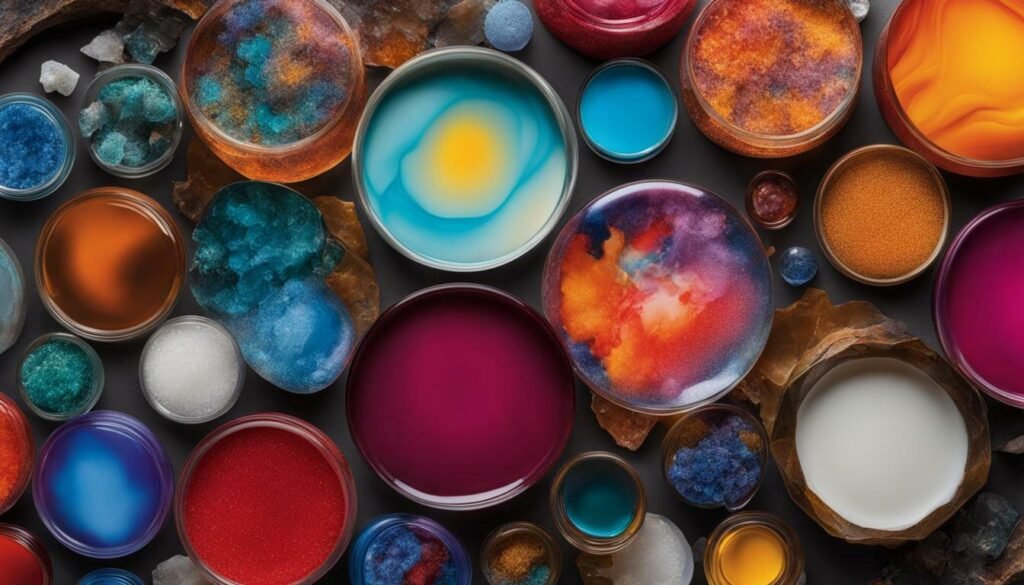
Resin art involves a range of different resin types, each with unique properties and applications. Here are some of the most commonly used ones:
- Epoxy resin: a popular choice for its durability and glossy finish. It’s also heat-resistant and waterproof, making it ideal for creating jewelry, table tops, and coasters.
- UV resin: a fast-curing resin that hardens when exposed to UV light. This type of resin is suitable for small and intricate resin art projects like jewelry and keychains.
- Polyester resin: a low-cost and easy-to-use resin that’s ideal for beginners. It’s commonly used for filling gaps, creating molds, and casting objects.
- Polyurethane resin: a flexible and impact-resistant resin that’s often used for industrial applications like creating automotive parts and electrical components.
When selecting a resin type, consider the nature of your project and your preferred work style to ensure the best possible results.
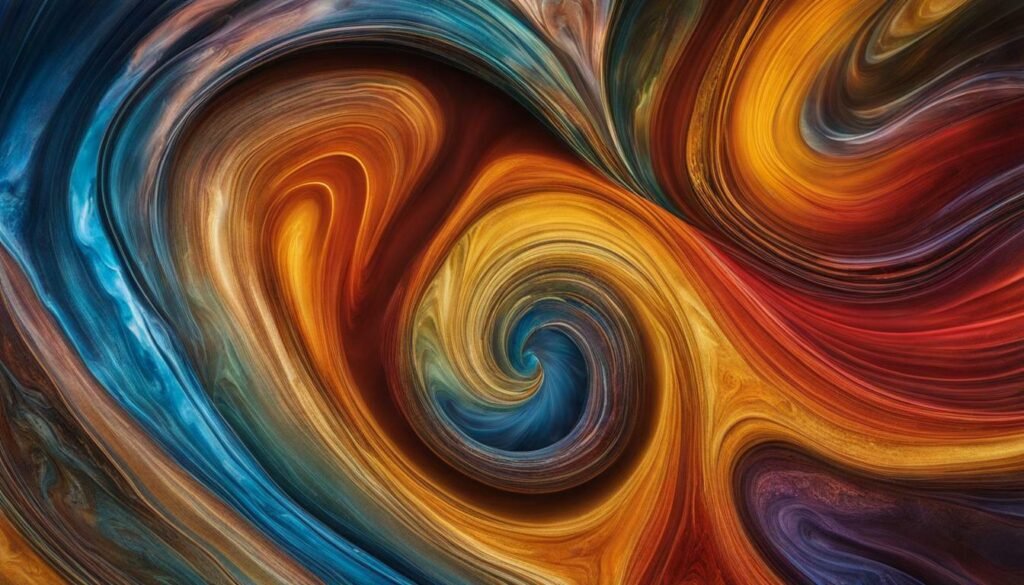
Adding color to your resin artwork can take it to the next level. Resin pigments are an excellent tool to achieve stunning and creative effects. Here are some techniques for creating captivating color effects with pigments:
- Mixing pigments: Experiment with different colors and ratios to create unique shades and hues.
- Translucent tints: Add a few drops of pigment to resin to create a subtle color effect.
- Marbling: Swirl different colors together to create a marbled effect.
- Gradient: Blend multiple colors together to create a gradient effect.
When mixing pigments, it’s important to stir thoroughly to ensure even distribution. Avoid adding too much pigment, as it can affect the resin’s curing process. By exploring different pigment techniques, you can create truly artful and creative resin artwork. Check out our selection of resin pigments to find the perfect colors for your project.

Resin pouring techniques are the foundation of creating mesmerizing resin art pieces. Here are some popular methods:
- Dirty Pour: Combining multiple colors of resin in a cup and pouring them onto the canvas in one go.
- Flip Cup: Adding resin and pigments to a cup, flipping it over, and letting the resin flow onto the canvas.
- Swiping: Pouring resin on the canvas and using a tool to swipe the resin across the surface, creating unique patterns and designs.
Each technique offers a chance to experiment and create unique pieces. Remember to start with thin layers of resin, build up as you go, and use a torch to remove any air bubbles. With practice, you’ll be able to control the flow of resin and create intricate designs that will leave your viewers in awe.
Adding Texture and Depth with Resin Layers
Layering resin can add incredible depth and texture to your artwork. Start by selecting materials that you want to embed, such as photos, dried flowers, or small objects.
- Prepare your work surface by covering it with plastic or parchment paper to protect it from spills.
- Pour a thin layer of resin into your mold or onto your surface, making sure it covers the entire area you want to fill.
- Place your embedded materials onto the uncured resin layer, arranging them as desired.
- Pour another layer of resin on top, enough to cover the embedded materials completely, but not too much that it will overflow.
- Repeat the layering process until you achieve the desired thickness, allowing each layer to cure completely before adding the next layer.
You can also create texture and depth by mixing substances into the resin, such as glitter, sand or beads. Try experimenting with different materials to create unique effects.
Pro tip: To achieve a sense of depth, pour the resin in a thick layer and use a heat gun or blowtorch to create bubbles in the resin. As the bubbles pop, they will leave small craters in the resin that add texture and depth.
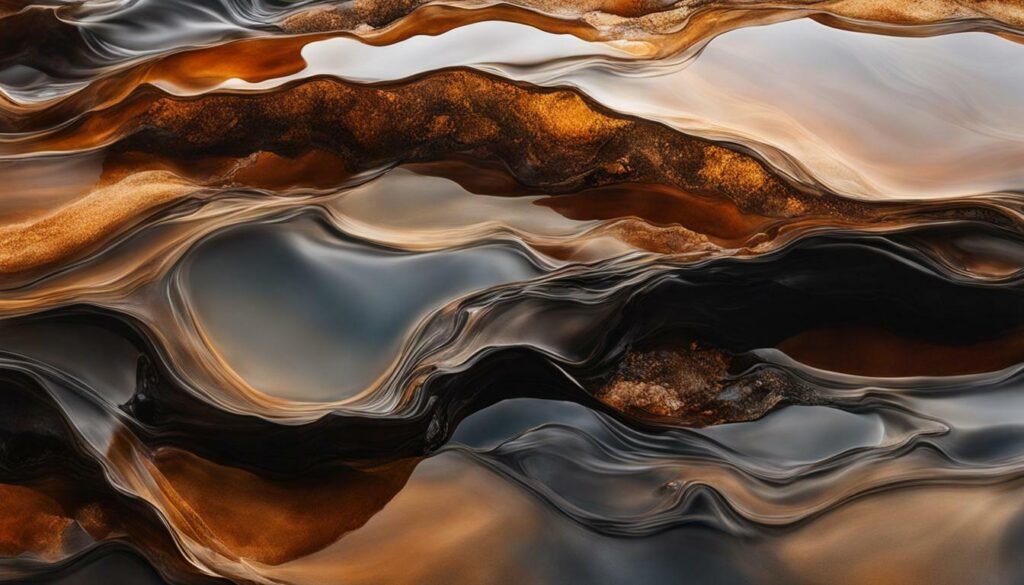
Resin art is a versatile medium that allows you to incorporate various materials to create unique mixed media art. Here are some tips:
- Mixing in dried flowers, fabric scraps, or paper pieces can add texture, color, and depth to your resin artworks. Make sure to dry the materials thoroughly before embedding them in resin.
- When adding other materials to resin, ensure they are compatible, and adhere to the surface effectively.
- Experiment with different materials and explore various techniques like collage, layering, and creating 3D effects with mixed media.
With mixed media, the possibilities are endless, and you can create a wide range of resin art pieces that are unique and visually captivating.
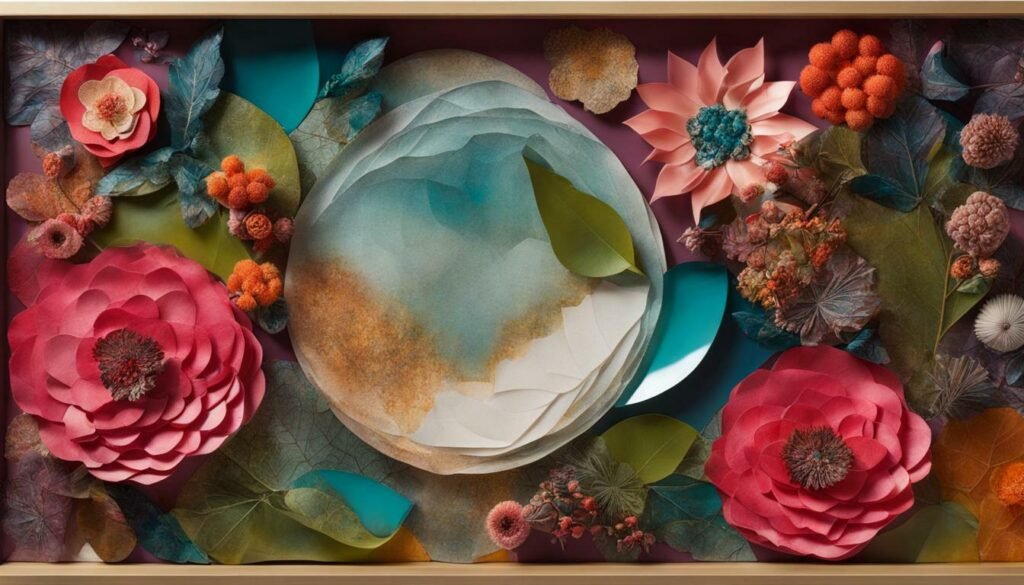
Achieving a Glass-Like Finish: Resin Polishing and Finishing Techniques
Polishing and finishing your resin artwork is crucial to achieving a professional, high-quality look. Follow these tips and techniques to achieve a flawless glass-like finish:
- Start by sanding the surface of your resin art using a fine-grit sandpaper. This will remove any imperfections or bumps.
- After sanding, wipe the surface clean with a microfiber cloth or tack cloth to remove any debris or dust.
- Use a polisher or buffer to buff the surface of the resin art. This will help to remove any scratches or swirl marks and give the surface a glossy shine.
- Apply a top coat to help protect and preserve the resin art. Be sure to follow the manufacturer’s instructions for the specific product you are using.
- When applying the top coat, use a brush or roller to evenly distribute the product. Avoid over-brushing, which can cause air bubbles to form.
By following these polishing and finishing techniques, you can achieve a glass-like finish that will make your resin art stand out. Display your art with pride, knowing that it has a professional, polished look.
Working with resin art can be a fantastic hobby, but it’s important to understand that there may be issues that arise during the process. It can be frustrating to encounter a problem when you’re trying to create something beautiful, but with a bit of knowledge and practice, you can overcome most issues. Here are some common problems that you might encounter during resin art and how to troubleshoot them:
- Bubbles: Bubbles in your resin can ruin the look of your finished artwork. To prevent this, make sure to mix your resin according to the manufacturer’s instructions and pour it slowly to minimize air bubbles. If bubbles still appear, use a heat gun or torch to pop them.
- Uneven surfaces: If your resin surface ends up uneven, it can be due to an uneven mix of resin and hardener. Make sure to measure your ingredients carefully, mix them thoroughly, and pour the resin evenly.
- Curing problems: If your resin doesn’t seem to be hardening properly, there may be issues with the temperature or humidity in your workspace. Make sure to follow the manufacturer’s instructions carefully and maintain the recommended temperature and humidity levels.
Most importantly, remember that resin art is a learning process, and mistakes are a natural part of that process. Don’t get discouraged if something goes wrong. Keep practicing, troubleshooting, and trying new things.

With these tips, you’re now ready to tackle any issues that may arise during your resin art journey. Don’t be afraid to experiment and try new techniques, and remember that practice makes perfect. Happy creating!
Taking Resin Art to the Next Level: Advanced Techniques
Are you ready to take your resin art to the next level? With advanced resin art techniques, you can elevate your mastery and create experimental and innovative pieces. Here are some techniques to try:
- Resin casting and molding: Use silicone molds to create detailed shapes and designs with resin.
- Wood and metal combinations: Incorporate resin with other materials, such as wood or metal, to create mixed media pieces that push the boundaries of traditional resin art.
- Resin paperweights and coasters: Add functionality to your resin art by creating practical pieces like paperweights and coasters.
As you explore these advanced techniques, keep in mind that experimentation is key. Don’t be afraid to take risks and try something new. With practice and patience, you can refine your skills and achieve resin art mastery.
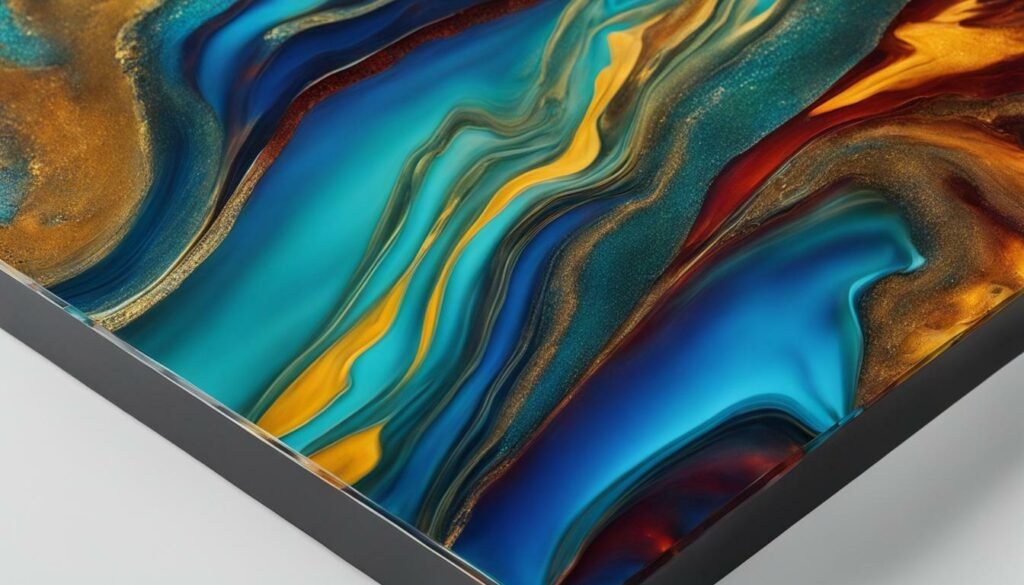
Creating Resin Jewelry and Accessories
Resin art isn’t just limited to canvases and frames; you can also create wearable art and accessories with it. Whether you want to make resin pendants, earrings, or bracelets, the possibilities are endless. Here are some tips to get you started:
- Choose the right molds and settings to create your unique jewelry pieces
- Combine resin with different materials like metal or wood to add texture and dimension
- Add pigments or other media to create colorful and eye-catching effects
- Use a polishing kit to achieve a glossy finish on your jewelry pieces
Don’t limit yourself to just jewelry, though. Resin can also be used to create accessories like phone cases, keychains, and more. The only limit is your creativity!
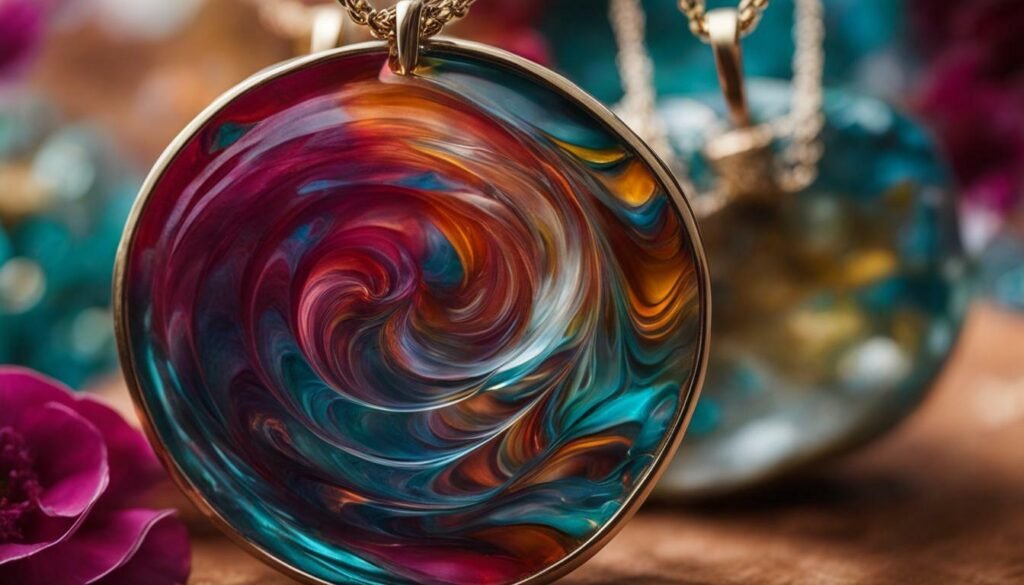
Congratulations on creating your stunning resin artwork! Now that your masterpiece is complete, it’s important to take proper care of it to ensure its longevity and beauty. Here are some tips to help you care for and preserve your resin artwork:
- Display your artwork away from direct sunlight or heat sources to prevent discoloration or warping.
- Dust your artwork regularly with a soft, dry cloth to prevent buildup and maintain its shine.
- Store your artwork in a cool, dry place to prevent moisture buildup that may lead to cracking or peeling.
- Avoid exposing your resin artwork to harsh chemicals or cleaning solutions as they may damage the surface.
- If your artwork requires cleaning, use mild soap and water and dry gently with a cloth.
- Consider applying a protective coat of resin-safe varnish or wax to further safeguard your artwork.
By following these simple steps, you can keep your resin artwork looking its best for years to come!
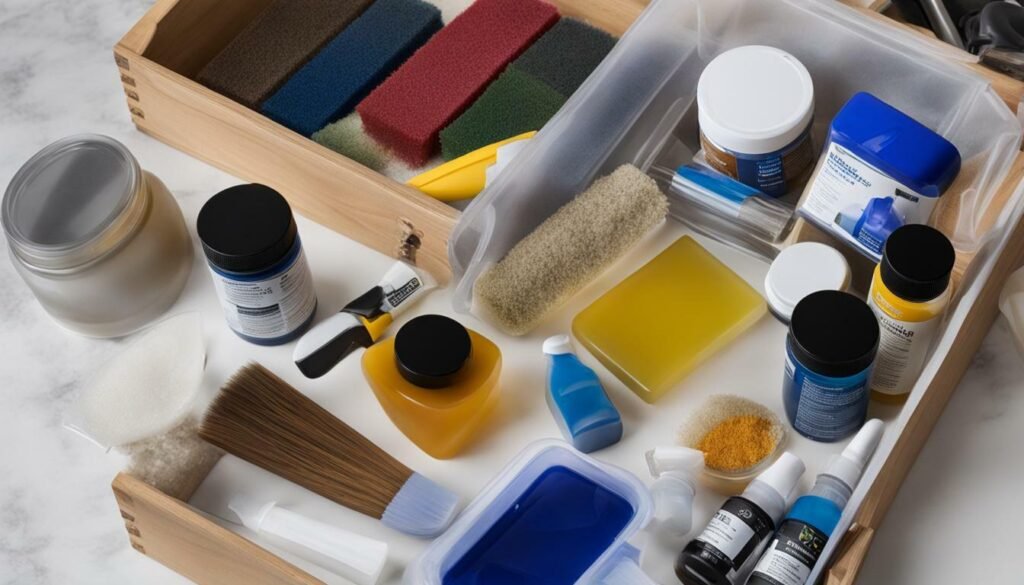
Congratulations on creating your stunning resin artwork! Now it’s time to showcase and potentially sell your masterpieces. Here are some tips to help you get started:
- To showcase your artwork, consider exhibiting it in local galleries or art shows. This is a great way to gain exposure and connect with potential buyers.
- You can also share your art on social media platforms like Instagram, Facebook, and Pinterest. Use hashtags and engaging captions to attract followers and create a strong online presence.
- If you’re interested in selling your resin art, there are plenty of online platforms to consider, such as Etsy, Artfire, and Handmade at Amazon. These platforms offer a built-in customer base and easy-to-use interfaces for setting up an online store.
- When pricing your artwork, consider the cost of materials and labor, as well as your level of experience and demand for your work. Research similar artists and their pricing to get a better idea of what the market can bear.
- Lastly, make sure to protect your artwork by using secure packaging and shipping methods. Provide care instructions to your customers to ensure that your art stays looking its best over time.
Remember, showcasing and selling your resin art requires patience and persistence. Keep refining your skills, engaging with your community, and promoting your brand, and you’ll be on your way to success!
As a resin artist, connecting with other like-minded artists can be an excellent way to gain inspiration and learn new techniques. Fortunately, there are many online communities and resources available for resin art enthusiasts.
Resin Art Communities
- Facebook groups such as “Resin Obsession” and “Resin Art Techniques” provide a platform for artists to share their work, ask for advice, and connect with fellow resin enthusiasts.
- Instagram is a great place to find and follow resin artists, and hashtags such as #resinart and #resinartist can help you discover new talent.
- Online forums like “The Resin Forum” allow artists to engage in discussions, ask questions, and share their experiences with other resin artists.
Resources
- YouTube is a treasure trove of resin art tutorials, from beginner to advanced level techniques and tips, which can help you improve your skills and learn new ones.
- Websites like “ArtResin” and “Resin Obsession” provide valuable information on resin types, safety precautions, and product reviews, as well as sell resins, pigments, and other supplies.
- Books such as “Resin Jewelry Making” by Kathie Murphy and “The Art of Resin Jewelry” by Sherri Haab are great resources for artists interested in exploring resin jewelry making.
Exploring these resin art communities and resources can provide endless learning opportunities and help you take your resin art to the next level.
FAQ
What is resin art?
Resin art is a form of mixed media artwork that involves using resin as the primary medium. It is known for its shiny, glass-like finish and allows artists to create unique, colorful, and three-dimensional pieces.
What materials and tools do I need to get started with resin art?
To get started with resin art, you will need resin (such as epoxy resin or UV resin), a mixing container, stirring sticks, a heat gun or torch for removing bubbles, protective gloves, a respirator mask, and a work surface that can be easily cleaned.
How do I choose the right type of resin for my artwork?
The choice of resin depends on your specific project and desired outcome. Epoxy resin is commonly used for its durability and self-leveling properties, while UV resin cures quickly when exposed to ultraviolet light. Consider factors such as curing time, thickness, and the effect you want to achieve when selecting resin.
Can I mix pigments with resin to create colors?
Absolutely! Mixing pigments with resin allows you to create a wide range of colors and effects in your artwork. You can use resin pigments specifically designed for resin art or experiment with other pigments like acrylic paints or alcohol inks. Remember to mix the pigments thoroughly to achieve consistent colors.
What are some popular resin pouring techniques?
There are several popular resin pouring techniques, including the dirty pour, flip cup, and swiping. In a dirty pour, different colors of resin are layered in a cup and poured onto the canvas simultaneously. The flip cup technique involves pouring multiple colors into a cup and then flipping it onto the canvas. Swiping involves dragging a tool through the resin to create beautiful patterns.
How can I add texture and depth to my resin art?
To add texture and depth to your resin art, you can incorporate various techniques such as embedding objects, creating multiple resin layers, or using additives like glitter or sand. Experiment with different materials and methods to achieve the desired effect in your artwork.
Can I use resin with other materials and create mixed media resin art?
Yes, resin can be combined with a wide range of materials to create mixed media resin art. You can incorporate elements like paper, fabric, dried flowers, or even found objects into your resin artwork. It offers endless possibilities for creating unique and visually captivating pieces.
How do I achieve a glass-like finish on my resin art?
To achieve a glass-like finish on your resin art, you’ll need to polish and finish the cured resin. This can be done by sanding the surface to remove any imperfections and then applying a clear topcoat or resin gloss. Buffing the surface gently with a polishing compound can further enhance the shine.
What should I do if I encounter issues with my resin art, such as bubbles or uneven surfaces?
Resin art can sometimes come with challenges like trapping bubbles or creating uneven surfaces. To address bubbles, you can use a heat gun or torch to remove them as the resin cures. For uneven surfaces, sanding and polishing can help to smooth them out. It’s important to follow proper mixing and application techniques to minimize these issues.
How can I take my resin art to the next level with advanced techniques?
Once you’ve mastered the basics of resin art, you can explore advanced techniques such as resin casting, molding, or combining resin with other mediums like wood or metal. These techniques allow you to create more intricate and experimental pieces that push the boundaries of resin art.
Can I create resin jewelry and accessories?
Absolutely! Resin is a popular medium for creating unique and one-of-a-kind jewelry and accessories. You can make resin pendants, earrings, bracelets, and even resin-infused home decor items. Explore different techniques like embedding objects or adding pigments to create wearable art that reflects your personal style.
How should I care for and preserve my resin art?
To care for and preserve your resin art, avoid exposing it to direct sunlight for extended periods, as UV rays may cause discoloration. Clean your artwork gently using a mild soap and water solution, and avoid using abrasive cleaners. Store your resin art in a dust-free environment or display it using suitable protective measures to prevent scratching or damage.
How can I showcase and sell my resin art?
There are various avenues for showcasing and selling your resin art, including art galleries, online platforms, and social media. Consider participating in art exhibitions, setting up an online shop, or connecting with local art communities. Price your artwork appropriately and promote your brand through effective marketing strategies to reach potential buyers.
Are there online forums or communities where I can connect with other resin artists?
Yes, there are several online forums and communities dedicated to resin art where you can connect with fellow artists, seek advice, and share your work. Platforms like Reddit, Facebook groups, and specialized resin art forums provide an opportunity to engage with a vibrant community and access valuable resources and inspiration.
